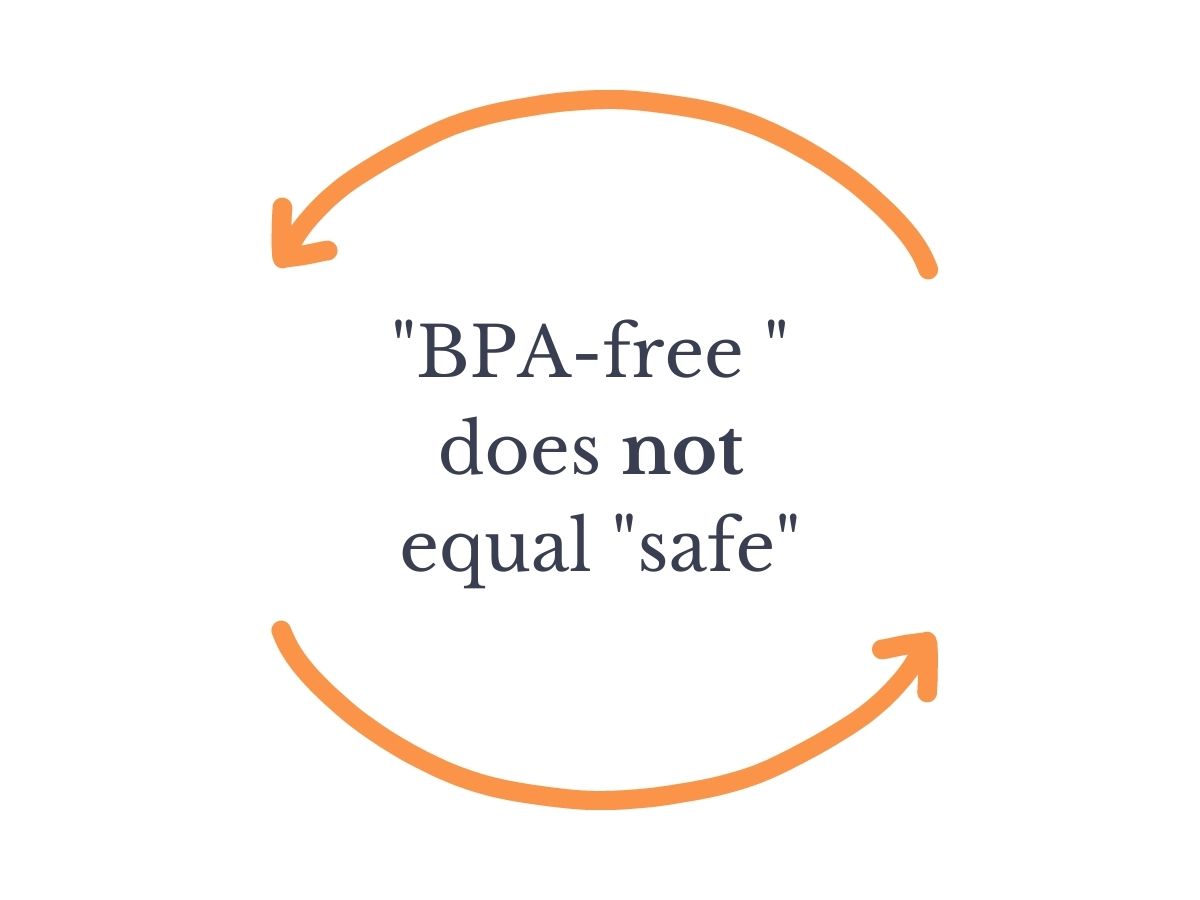BPA-free does not Equal Safe
U.S. manufacturers responded to Canada’s 2010 ban on the use of BPA in baby bottles by creating products that are #BPAfree. Today, we see all kinds of’ BPA-free’ products on the market. Which seems like it should be great, right?! But is BPA-free really safe? The short answer is no. BPA-free does not equal safe. And here’s why:
What most people don’t realize is that although they have removed the BPA, they have replaced it with BPS, BPB, or BPF. These toxicants are most likely as dangerous as BPA and what is being referred to as ‘regrettable substitutes.’
Evidence-Based Knowledge
A recent article from MSN highlights this by stating:
“…researchers are worried that the chemicals used to replace BPA, things like bisphenol S, bisphenol F, and bisphenol B, are starting to show up in food, house dust, blood, and urine. These newer chemicals were chosen because they were similar enough to BPA to serve the same function — namely, to produce strong, clear plastics. But growing evidence suggests they may also be endocrine disruptors.”
They continue by revealing:
“A 2019 study in the journal Toxicology reviewed hundreds of studies on two dozen different BPA substitutes and concluded that some ‘have health or toxicological effects at concentrations similar to or lower than BPA.’ In other words, these chemicals may have the same harmful effects as BPA, but at lower levels. Almost all of the BPA substitutes showed some hormonal influence, suggesting they could affect growth and reproduction.”
Environmental Toxin Protection
Will we ever be completely protected from toxins in our environment? Unfortunately, no. At this point in time, they are everywhere – our food chain, the air, soil, etc.
However, there is immense importance of being aware that BPA-free does not equal safe or ‘non-toxic’ because of the above-mentioned substitutes being equally as harmful. And sadly, we also know that we cannot count on governmental agencies to keep up fully informed and protected (i.e., products are often allowed into the marketplace and then found out to be toxicants, rather than having to prove their safety first [as is done in some other countries]). So it’s up to you to keep yourself educated and informed and to minimize your exposure as best as you can.
Exposure Too Soon
We know that the average urban mother’s cord blood contains about 200 toxic chemicals. This means babies are being exposed before s/he even comes out of the womb! There are countless baby and children’s products that are made from plastic. So it’s important that we begin to recognize that the little ones are being exposed to these kinds of chemicals from a very young point in their existence. This may be one of the factors why we are seeing growth rates of infertility in the population at large, and fertility problems (often under the diagnosis of “unexplained infertility”) starting to show up at much younger ages.
Knowledge is Power
Below are some important information and suggestions to keep in mind with regards to the use of plastics (if you must use them):
• There is a leeching effect that occurs with extreme temperatures and plastic (freezer, microwave, etc.).
• Do not use any plastics in the microwave, even if it says “microwave safe.”
• Do not freeze foods or drinks if they are in plastic; try to use paper or glass.
Beyond Plastic
To ensure you aren’t taxing your system with extra toxins that could impede not only your reproductive health but overall health and wellbeing, you can begin to educate yourself.
For healthy beauty products and cosmetics:
• safecosmetics.org or EWG’s skin deep site – input your personal care products to ascertain their levels of toxicity
• EWG’s website – read informative articles and see listings of recent “EWG-verified” safe products
This is one way you can make informed decisions. Then you can begin to clean your cabinets, make-up bag, etc., of any items that may have higher levels of toxicants.
Health Home Living Guide:
EWG also has a healthy living home guide to educate you on making your home space as toxin-free as possible. But you can also begin right now to take inventory:
✓ Look for non-toxic cleaners for your home at the local natural market (i.e., enzyme-based cleaners).
✓ Use a canteen or other non-plastic (i.e., glass, food-grade stainless steel) container for your water consumption.
✓ Be aware of the amounts of plastic when you shop – even the ones that say “BPA-free.”
✓ Look around your own kitchen and consider substituting plastic utensils, cutting boards, and storage containers with silicon, glass, stainless steel, or wood.
For guidance on the go:
Download the EWG’s Healthy Living App on your phone to use in your day-to-day shopping. From food to shampoo, it has you covered!
The Take-Away
The take-away? Try to limit – or completely eliminate the use of – plastics. Unfortunately, complete elimination might actually not be possible in today’s world. But remember this quote (that one of my teachers used to say):
“We vote with our dollars.”
So, we can all do our part to the best of our ability to try to protect our Earth, our health, and the health of our baby-to-be, as well as future generations.
***
You can discover the ugly truth on getting pretty with nail polish and how it may affect your hormonal health here.
